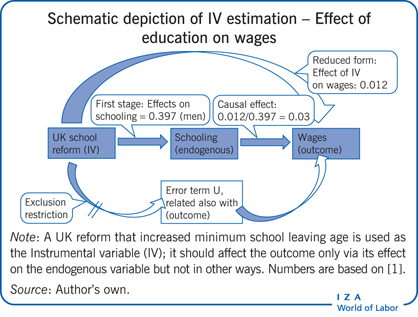Elevator pitch
Randomized control trials are often considered the gold standard to establish causality. However, in many policy-relevant situations, these trials are not possible. Instrumental variables affect the outcome only via a specific treatment; as such, they allow for the estimation of a causal effect. However, finding valid instruments is difficult. Moreover, instrumental variables estimates recover a causal effect only for a specific part of the population. While those limitations are important, the objective of establishing causality remains; and instrumental variables are an important econometric tool to achieve this objective.
Key findings
Pros
Valid instrumental variables help to establish causality, even when using observational data.
Using instrumental variables helps to address omitted variable bias.
Instrumental variables can be used to address simultaneity bias.
To address measurement error in the treatment variable, instrumental variables can be used.
Cons
Finding strong and valid instrumental variables that affect participation in the treatment but do not have a direct effect on the outcome of interest is difficult.
Estimated treatment effects do not generally apply to the whole population, nor even to all the treated observations.
Estimated treatment effects may vary across different instruments.
For small sample sizes, and in case of “weak” instruments, instrumental variable estimates are biased.
